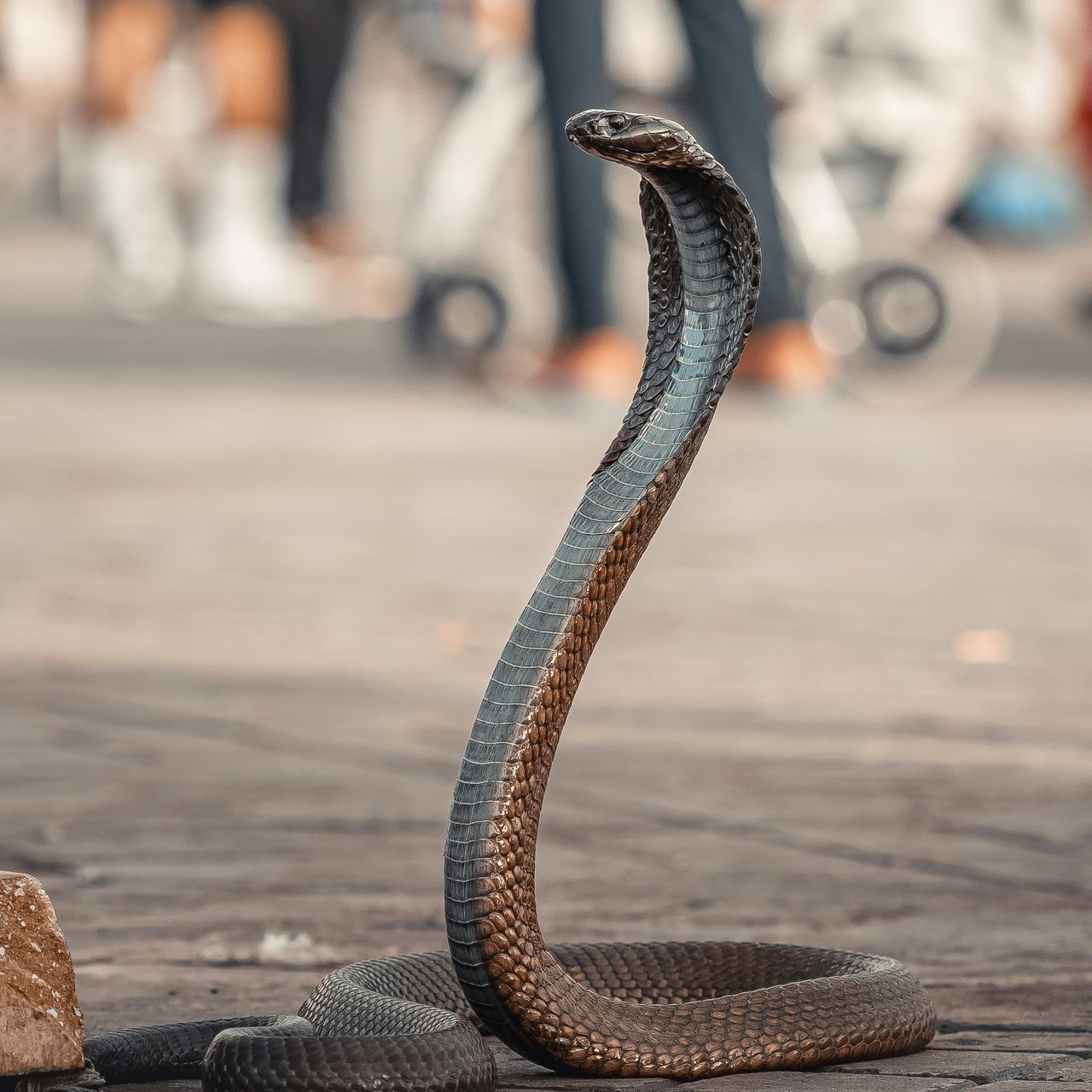Jemaa Square, a space where time stands still and the senses awaken in every season and at every hour of the day. The gnaouas, acrobats, and storytellers put on a show, but it's the snake charmers who remain the iconic figures of the place. Dressed in djellabas, the men set up at the start of the day in the square. Once the carpets and musical instruments are laid out on the ground, the tamers bring out the stars of their act: the reptiles.

Behind the scenes
The show begins with the first melodies played. The nay (flute), the ghaita (trumpet), and bendir (frame drum) are the preferred instruments of the snake charmers who, after a few notes, open the trap to let the grass snakes, vipers, and cobras escape in front of the amazed eyes of the spectators.
The parade starts between the man and the reptile which, at first glance, seems hypnotized. In reality, snakes are almost deaf by nature and unresponsive to music. Thus, during the halka, the animal moves then returns to its vertical position in response to the body and head movements of its charmer, as well as the waves emitted by the vibrations of the instruments and the ground. After a few minutes, the show is in full swing, the music becomes more intense, and the crowd gathers around the performers, some even show courage by wrapping one of these beasts around their neck for a souvenir photo.
The origin of a risky profession
Most snake charmers come from the southern part of Morocco and belong to the mystico-religious brotherhood, the Aïssawas. This community is known for its spiritual music, often used during trance ceremonies. These men claim a magical power over reptiles, a form of hypnosis whose technique is passed from father to son. Thus, from their adolescence, the future tamer accompanies a family member on snake hunts to learn the technique and eliminate any potential phobia, for their beliefs hold that an aïssawi is naturally immune to bites.
Unfortunately, reality does not always meet legend. In the past, a 60-year-old snake charmer succumbed to the bite of his cobra at Jemaa el Fna Square. This profession is also not favored by animal rights activists, as some reptiles undergo removal of their fangs, leading to their death a few months later.
